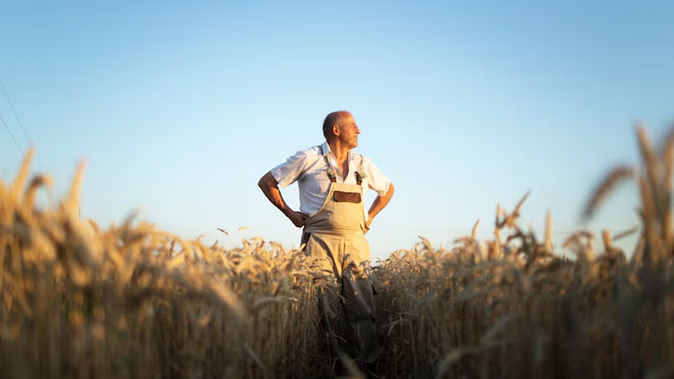Agricultural Crisis: 70% of European Farmers Lack Seasonal Disaster Insurance Despite Repeated Losses
In a time when climate change is making its mark across the globe, even economically advanced regions like Europe are not immune to its adverse effects. Every year, seasonal disasters such as droughts, floods, and hailstorms inflict devastating damage on agriculture. Crops are ruined, livestock perish, and the overall food production system suffers immensely. Yet, despite this recurring threat, a staggering 70% of Europe’s farmers remain without seasonal disaster insurance, leaving them vulnerable to the full financial impact of these calamities.
Mounting Losses from Climate Disasters
Europe, known for its prosperous economy and well-structured farming sector, faces an average agricultural loss of €28.3 billion (approximately ₹2.55 lakh crore) annually due to climate-induced disasters. This equates to nearly 6% of the continent’s total agricultural production. More alarmingly, forecasts suggest that if no significant changes are implemented, these losses could surge dramatically—rising from 42% to an estimated 66% by the year 2050.
According to a joint report by the European Investment Bank (EIB) and the European Commission, only 20% to 30% of these agricultural losses are currently covered by insurance schemes. The rest is directly borne by the farmers, pushing them into financial distress, reducing their ability to reinvest, and making the agricultural sector increasingly unsustainable.
A Crisis Beyond Borders
This crisis is a stark reminder that the consequences of climate change are not confined to underdeveloped or developing countries. Even in Europe—where infrastructure, economy, and governance are among the strongest globally—the agriculture sector is buckling under the weight of recurring natural disasters. The problem is no longer regional but global, demanding international cooperation and policy innovation.
Urgent Need for Resilient Solutions
To address this growing problem, the EIB-EC report recommends the adoption of a multipronged approach to risk management and mitigation in agriculture. Some of the key suggestions include:
- Catastrophe Bonds (Cat Bonds): These are risk-linked securities designed to raise money in case of natural disasters, providing immediate liquidity for recovery.
- Public-Private Insurance Partnerships: Collaborations between governments and insurance companies to expand coverage and reduce premiums for farmers.
- Rapid Relief Distribution Systems: Mechanisms to ensure swift delivery of aid and compensation when disaster strikes.
However, the report also emphasizes that insurance alone cannot shield agriculture from the impacts of climate change. Long-term solutions must include investments in climate-resilient agricultural practices, such as sustainable water management, crop diversification, organic farming, and use of climate-smart technologies.
Lessons from India: The Case of PMFBY
India, a country with a vast agrarian economy, also struggles with protecting its farmers from seasonal calamities. The Pradhan Mantri Fasal Bima Yojana (PMFBY), launched in 2016, was envisioned to offer comprehensive insurance coverage for crop failure. Despite its potential, only around 30% of India’s cultivable land is currently under insurance protection, falling short of the initial target of 50% by 2019.
Nevertheless, the scheme has made some positive strides. As of 2023–24, the scheme operates in 21 states, and voluntary participation is increasing. Particularly notable is the rise in participation from non-loanee farmers, who constituted 55% of total enrollees—an indication that awareness and acceptance of crop insurance are growing.
The Path Forward: Making Agriculture Climate-Friendly
To ensure the long-term viability of agriculture both in Europe and globally, the focus must shift from reactive to proactive measures. Here are some strategic recommendations:
- Enhancing Insurance Coverage: Governments should subsidize premiums and encourage private insurers to expand their risk appetite for agriculture.
- Investing in Climate-Resilient Infrastructure: Building irrigation systems, cold storage, and transport networks that can withstand extreme weather.
- Educating Farmers: Increasing awareness and training about climate adaptation techniques and insurance benefits.
- Policy Integration: Aligning agricultural policies with climate action plans at national and international levels.
- Data-Driven Decision-Making: Using satellite imagery, weather forecasting, and AI to assess risk and plan agricultural activities accordingly.
Conclusion
Climate change has transformed from a distant environmental issue into an urgent economic and humanitarian crisis. In Europe, where one would expect advanced insurance and risk management systems to be the norm, the stark reality is that most farmers are left to fend for themselves. This scenario is not only unjust but also unsustainable.
It’s time for policymakers, insurance providers, agricultural institutions, and international organizations to come together and prioritize climate resilience in farming. Only through comprehensive insurance coverage, sustainable practices, and long-term planning can we secure the livelihoods of millions of farmers and the food supply of future generations.
